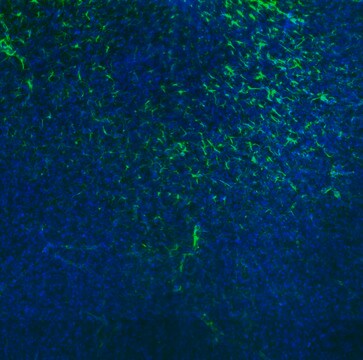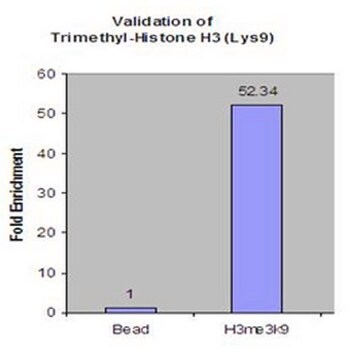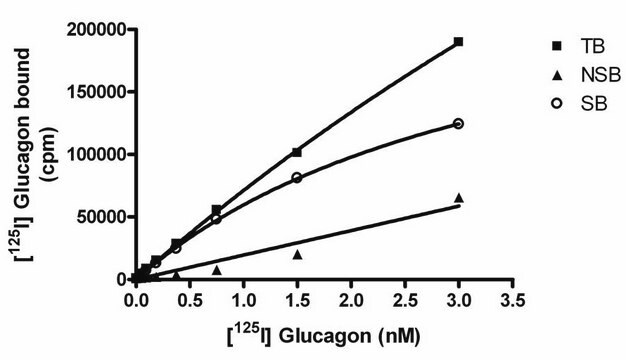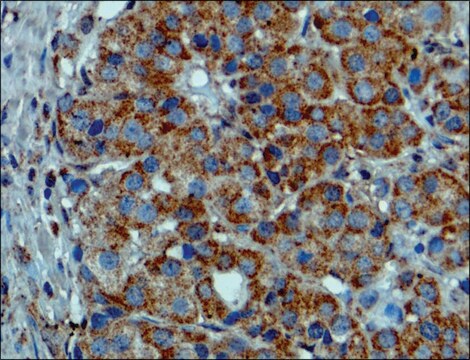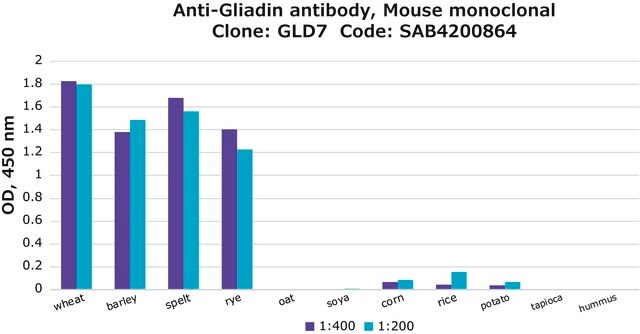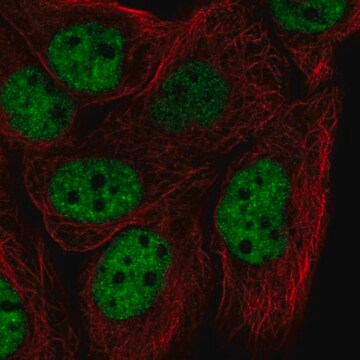04-1462
Przeciwciało anty-hnRNP F, klon 3H4
clone 3H4, from mouse
Synonim(y):
heterogeniczna rybonukleoproteina jądrowa F, białko podobne do nukleoliny, białko HnRNP F, białko podobne do nukleoliny mcs94-1, mcs94-1
About This Item
Polecane produkty
pochodzenie biologiczne
mouse
Poziom jakości
forma przeciwciała
purified immunoglobulin
rodzaj przeciwciała
primary antibodies
klon
3H4, monoclonal
reaktywność gatunkowa
human
metody
immunocytochemistry: suitable
immunoprecipitation (IP): suitable
western blot: suitable
izotyp
IgG1κ
numer dostępu NCBI
numer dostępu UniProt
Warunki transportu
wet ice
docelowa modyfikacja potranslacyjna
unmodified
informacje o genach
human ... HNRNPF(3185)
Opis ogólny
HnRNP są białkami wiążącymi RNA, które łączą się z heterogenicznym jądrowym RNA (hnRNA) i wiążą się z pre-mRNA w jądrze. Kompleksy te są związane z przetwarzaniem pre-mRNA i innymi aspektami metabolizmu i transportu mRNA. Istnieje ponad 20 różnych heterogenicznych rybonukleoprotein jądrowych (hnRNP) związanych z pre-mRNA w jądrze komórek ssaków. Te różne hnRNP wykazują szereg powinowactw do różnych homopolimerów rybonukleotydów i sekwencji ssDNA. Dla kontrastu, białko hnRNP F, jak również hnRNP H (wysoce spokrewnione białko) wydają się wiązać tylko z poli(rG). Te unikalne właściwości wiązania RNA, a także sekwencja aminokwasowa i inne dane wskazujące na odrębną wewnątrzjądrową lokalizację hnRNP F i hnRNP H sugerują, że są one unikalne w stosunku do innych hnRNP i odgrywają ważną rolę w przetwarzaniu RNA zawierających sekwencje bogate w guanozynę.
Specyficzność
Immunogen
Zastosowanie
Reprezentatywna partia została wykorzystana przez niezależne laboratorium do IP. (Matunis, M.J., et al. (1994). Nucleic Acids Res. 22(6):1059-1067).
Analiza immunofluorescencji:
Reprezentatywna partia została wykorzystana przez niezależne laboratorium w IF (Matunis, M.J., et al. (1994). Nucleic Acids Res. 22(6):1059-1067.)
Epigenetyka i funkcje jądrowe
Metabolizm RNA i białka wiążące
Jakość
Western Blot Analysis: 0.5 µg/mL of this antibody detected hnRNP F on 10 µg of K562 cell lysate.
Opis wartości docelowych
Postać fizyczna
Przechowywanie i stabilność
Komentarz do analizy
Lizat komórek K562
Inne uwagi
Oświadczenie o zrzeczeniu się odpowiedzialności
Nie możesz znaleźć właściwego produktu?
Wypróbuj nasz Narzędzie selektora produktów.
Kod klasy składowania
12 - Non Combustible Liquids
Klasa zagrożenia wodnego (WGK)
WGK 1
Temperatura zapłonu (°F)
Not applicable
Temperatura zapłonu (°C)
Not applicable
Certyfikaty analizy (CoA)
Poszukaj Certyfikaty analizy (CoA), wpisując numer partii/serii produktów. Numery serii i partii można znaleźć na etykiecie produktu po słowach „seria” lub „partia”.
Masz już ten produkt?
Dokumenty związane z niedawno zakupionymi produktami zostały zamieszczone w Bibliotece dokumentów.
Nasz zespół naukowców ma doświadczenie we wszystkich obszarach badań, w tym w naukach przyrodniczych, materiałoznawstwie, syntezie chemicznej, chromatografii, analityce i wielu innych dziedzinach.
Skontaktuj się z zespołem ds. pomocy technicznej